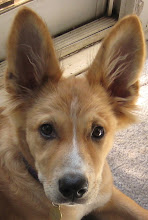People wish to learn to swim and at the same time to keep one foot on the ground.
— Marcel Proust
What is it about aging that makes us so cautious? I’m not talking about the “afraid I’ll break a hip” or “driving down the freeway at 35 mph” type of caution. But more like the unwillingness to take risks that I once wouldn’t have even considered risky.
I thought wisdom, not caution, was supposed to come with age. Perhaps there is wisdom in this carefulness—I’m just not smart enough to see it as that. From my perspective, caution just looks like fear. And I’ve never liked being afraid.
So what is it I’m afraid of? Spending my savings to fund my dream. Paying thousands of dollars to publish my children’s novel online and market it to the masses. (More about the book and website in future posts.) I’m afraid to risk my rainy-day bundle on something that might never bring in a dime—especially since there’s not a lot of cash coming in these days.
My younger self wouldn’t have thought twice about spending the money. (Of course, my younger self didn’t have a mortgage or want to retire in the next decade or so.) If I wanted something and had the wherewithal, then the decision was made. No second thoughts, no regrets.
I wanted to move cross country to San Francisco and spread my wings while putting down roots. Check. Quit my ad agency job to work on a novel. No problem. Take months off from freelancing to drive across country and then years later, more time off to focus on my personal writing. Done.
But now…I don’t know. Maybe. Sounds awfully risky. It might not work out.
What if work stays slow for months and months? What if I need every last cent of my savings just to pay my bills? What if I never get work again?
I can “what if” myself into a frenzy.
So I try to turn it around with what if I didn’t even have the money? What if I never earned it, or worse still, invested it with Bernie Madoff? Then I wouldn’t have this dilemma. Or this opportunity.
Am I too old to believe that the details will fall into place if I just head in the right direction? Am I too scared to have the faith that has allowed me to make bold moves before? How long will I cast about for a safety net, a guarantee, when I know life offers no such thing? Can I find the courage to trust that I’ll be okay no matter what happens?
Deep in my heart, I know that I really don’t have a choice. I either spend the money on my dream now—or spend the rest of my life being mad at myself. In that equation, the money seems a much smaller price to pay.
So it’s time to take a deep breath, let both feet leave the ground and dive into the deep end. Stay tuned to see whether I sink or swim.
